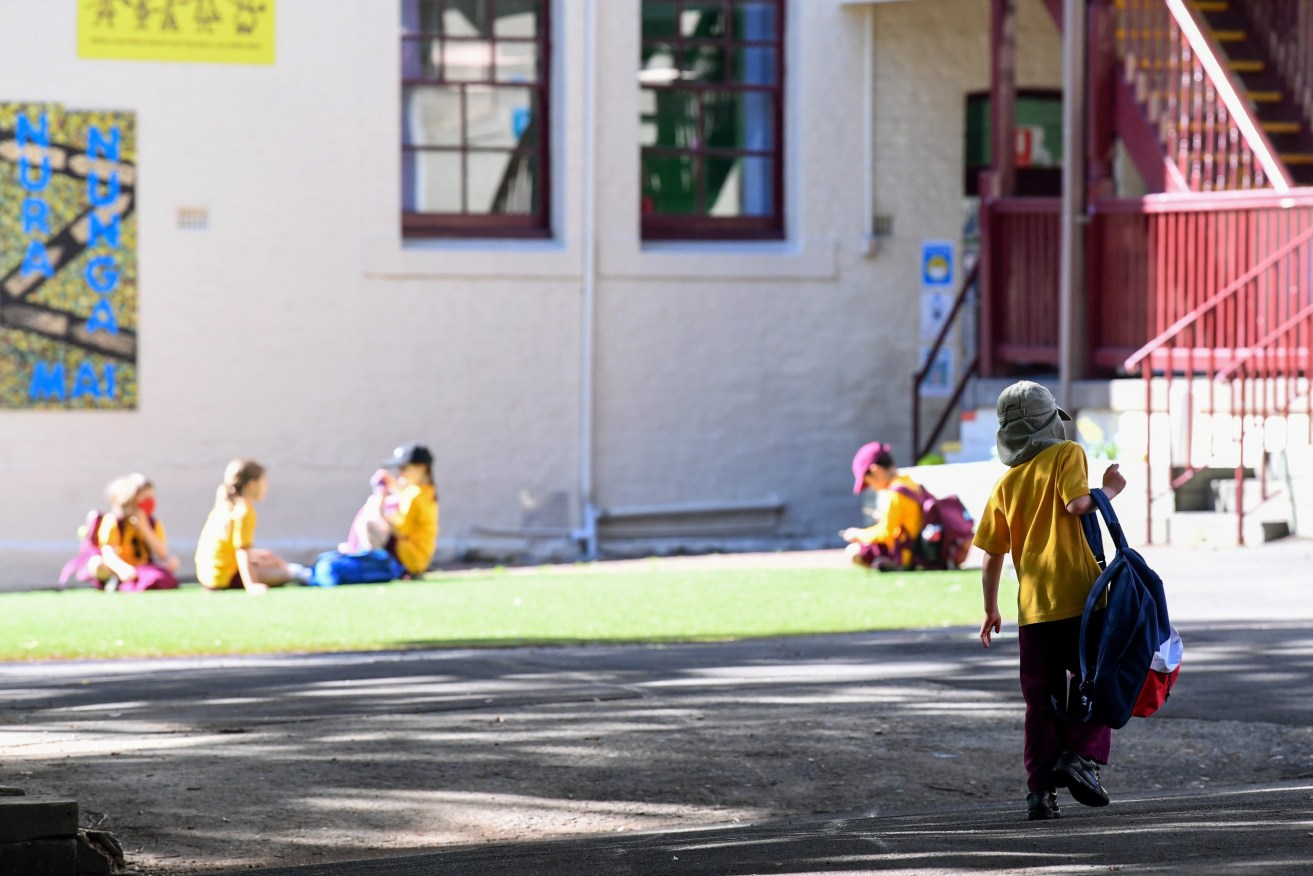Principals given composite class choice for school return
Principals will decide whether to allow Year 2 students in composite 1/2 classes to join classmates when they return to school next Wednesday, while Year 11s studying SACE Stage 2 subjects could also be allowed back in the classroom – despite the Government’s “hybrid” model earlier ruling those years out.

Photo: Bianca De Marchi/AAP
Under the government’s staggered back to school plan, only vulnerable students, children of essential workers and those in Reception and Years 1, 7, 8 and 12 are allowed to return to school for face-to-face learning from next week.
All other students will spend the first two weeks of Term 1 learning online, in a bid to slow the spread of the Omicron COVID-19 variant once school returns.
The plan has sparked confusion among parents of children in composite Year 1/2 classes, where half the students would return to school on February 2, while the other half would stay at home.
An Education Department spokesperson told InDaily that schools with composite classes that fall across the at-home and in-class learning classification would be asked to nominate either remote or face-to-face learning for those classes.
“Teachers are not required to offer remote learning and face-to-face programs at the same time,” they said.
“Principals will make the call based on what’s best for their school community.
“It’s a practical approach that will support mostly smaller country schools, reflecting the reality of their situation while honouring the spirit of the health advice.”
Education Department chief executive Rick Persse told FIVEaa this morning that he had “greenlighted” principals to make a “local decision” about whether to allow all students in Year 1/2 classes to return to classrooms.
“On the issue of composite classes (we’re) very mindful of that,” he said.
“If there was a couple of Year 2s in a small group then I would be OK with them attending in a face-to-face basis.”
Persse said he had also authorised secondary school principals to allow Year 11 students studying SACE Stage 2 courses to join Year 12 students when they return to classrooms for face-to-face learning.
The hybrid school model is only set to be in place for two weeks. From February 14, all students are scheduled to return to school for face-to-face learning.
However, the government’s plans could be derailed by the threat of a teachers strike next Wednesday.
Australian Education Union members have until 5pm tonight to vote on whether to support the statewide strike. The union’s executive is scheduled to meet tomorrow morning to discuss the outcome before deciding whether to proceed with the stop-work action.
The teachers’ union said last week that it would not go ahead with a strike if the State Government agreed to extend school holidays by two weeks to make safer COVD plans.
It also called on the Government to release the outcomes of its school ventilation audit and independent report into air filtration units.
But both the Premier and Education Minister have ruled out postponing the start of the school year and say action is underway to improve ventilation in classrooms.
Education Minister John Gardner told reporters this afternoon that it would be a “mistake” for teachers to go on strike, adding he thought the ballot for strike action was put out too early.
He said the union had been offered the opportunity to meet with chief public health officer Professor Nicola Spurrier this week.
Gardner told ABC Radio Adelaide this morning that a “desktop audit” completed in November last year found just under a third of classrooms had access to “fresh air intake modern air-conditioning”.
He said a second audit identified what work was needed to improve ventilation in classrooms, such as unjamming windows and fixing air-conditioners.
“I’m very confident the overwhelming majority of those identified classrooms that needed some work will be fixed by the beginning of the year or early in Term 1,” he said.
“As those single cases or job orders have been coming in, the Department for Education has been putting them out for work to be done.”
Gardner said the government bought 1050 air purifiers before an independent trial found they “do not reduce the amount of CO2 within education spaces in any meaningful way and provide minimal improvement to the quality of air”.
“The tests show they aren’t as useful as you’d hope, however, in circumstances like a bushfire you’d want to bring them to improve the air quality,” Gardner said.
“As it turns out, we are using them for Port Pirie where it’s very clear because of the risk of lead in the dust in the air, air purifiers are the best mitigation we can do in those classes that don’t have the modern air purification.”
It comes after the government announced on Friday that it “strongly encouraged” early learning and preschool educators and care staff to undertake a rapid antigen test every Monday, Wednesday and Friday.
But it did not recommend that primary or secondary school teachers follow the same regime.




